Report slams Louisiana charter school oversight
The Times-Picayune - 05-08-2015 - Louisiana understaffs its charter schools oversight offices and, instead of proactively investigating...
The Times-Picayune - 05-08-2015 - Louisiana understaffs its charter schools oversight offices and, instead of proactively investigating these schools, relies on charters' own reports and whistleblowers to uncover problems, according to a report released Tuesday (May 12) by the Center for Popular Democracy and the Coalition for Community Schools. That allows theft, cheating and mismanagement to happen, such as the $26,000 stolen from Lake Area New Tech High and the years of special education violations alleged at Lagniappe Academies.
The report also casts a skeptical eye on the veracity of the data that Louisiana uses to calculate the performance scores that keep charters open and determine their renewal terms. And it faults the state for closing struggling charters instead of intervening to improve them.
The Center for Popular Democracy's partners include the American Federation of Teachers, which has an uneasy relationship with charters, and the Annenberg Institute for School Reform, which studies charter school oversight. Kyle Serrette, the center's director of educational justice campaigns, said its parent members had children in charter and conventional public schools.
That said, one of the report's recommendations is to "impose a moratorium on new charter schools until the state oversight system is adequately reformed."
The Louisiana-based Coalition for Community Schools opposes charter schools outright and filed a civil rights complaint against the state Education Department in 2014. That complaint also included a demand to freeze chartering in New Orleans.
The two groups' report said Louisiana charters could suffer from "tens of millions of fraud in the 2013-14 school year alone," based on the methodology of the Association of Certified Fraud Examiners. In that time, employees of three New Orleans charter schools stole about $110,000, and two charter operators were accused of meddling with retirement payments.
Oversight agencies play almost no role in helping charter schools improve academic outcomes."
"The state has invested heavily in increasing the number of charter schools while failing to create a solid regulatory framework that truly protects students, families and taxpayers," the authors write. Furthermore, "oversight agencies play almost no role in helping charter schools improve academic outcomes. ... The state has no system in place to provide a path to high-quality academics for all struggling charter schools."
Charter schools are publicly funded but run by independent non-profit boards. They control their own curriculum and hiring but must meet academic and operational standards to stay open. The state Education Department oversees most of Louisiana's 130-plus charters; local school systems oversee the rest.
Read the report
However, as of December, the Education Department's charter audit team consisted of only three people, according to a critical December report from the Louisiana legislative auditor's office. Education Superintendent John White defended his team at the time, saying they reviewed charter schools' audits, among other activities.
Tuesday's paper says that isn't enough. Not only do charters hire their own accountants to conduct annual audits, but the audits are not designed to prevent or detect fraud. Indeed, reports typically contain a disclaimer saying they are not expressing an opinion on fraud controls. The legislative auditor's office might dig deeper but rarely does so, the report states.
"The only audits Louisiana charter schools routinely undergo are the ones they pay for themselves," the authors write.
The report faults the Education Department for not spending enough time on-site at charters. Charters receive regular visits and reviews from state inspectors, and Louisiana Recovery School District officials said their own findings of wrongdoing at Lagniappe Academies in New Orleans showed that their oversight procedures worked.
The authors of Tuesday's report disagreed. The state's 2013-14 review of Lagniappe Academies gave full points for special education, the two organizations said, and it was only later that state inspectors uncovered extensive reports of violations during that time period.
"The situation at Lagniappe shows exactly the problems with the state's oversight structure for charter schools," the report says. "The state relies on a largely self-reporting oversight structure that is easily manipulated by the schools themselves."
The authors doubt the accuracy of the test scores that are used to measure charters' academic performance, writing that the data "is vulnerable to manipulation."
Finally, the authors disagree with the state's readiness to close charters, including Lagniappe.
"Clearly there are times when problems are significant enough that a school must be closed. Yet, the current intervention (process) is designed to make school closure a normal and common part of the state's accountability system," the authors write. "The system needs to be updated to produce more stability for Louisiana children." In six years, more than 1,700 New Orleans students have seen their charter schools close, according to the report.
Louisiana's laws are "designed to set a high standard but not to help," Serrette said.
The state does at times intervene instead of closing schools, although this is not mentioned in the report. The Recovery School District has chosen successful charter operators to take over failing schools, for example, and White directed Lycée Français to find a new chief executive and assigned it a consultant team. Lycée has gone on to make a B grade, and its charter contract has been extended.
The report's recommendations include:
Require fraud audits every three years, to be conducted by the state legislative auditor's office
Train charter staff and boards on preventing fraud
Hire more staff for the legislative auditor's office and charter school oversight teams
Require "mandatory, hands-on, long-term, strategic support" for charters in trouble
Go beyond test scores when calculating school letter grades
Create local committees, including neighbors and parents, to design schools that serve the needs of a community
Coordinate social services at and around schools
Release raw testing data to the public.
Some of these issues are not unique to charters. Louisiana's conventional public schools also face pressure to keep test scores high: If they don't, they may be taken over by the state. There have been numerous examples of corruption and fraud in school boards and systems. Serrette said it was likely Louisiana's regular school systems needed stronger oversight as well.
Source: Nola.com
New York's vote to curb stop-and-frisk is another win for civil rights
The Guardian - June 27, 2013, by Brittny Saunders - New York City Council passed two bills designed to guarantee safety and respect for all New Yorkers. The measures were championed by Communities...
The Guardian - June 27, 2013, by Brittny Saunders - New York City Council passed two bills designed to guarantee safety and respect for all New Yorkers. The measures were championed by Communities United for Police Reform, a broad coalition of city groups, and will strengthen the existing ban on police profiling and establish independent oversight of the city's police department.
Today is a new day for New York City. The move reflects a growing alarm over NYPD policies and practices that violate the rights of thousands of New Yorkers and undermine police-community relationships – practices such as the discriminatory use of stop-and-frisk that waste valuable public dollars, while producing no measurable impact on public safety.
Criticism is mounting, not only in the council, but also in federal court, where the legality of these practices is being questioned. Those same questions are echoed in the homes of regular New Yorkers – a majority of whom disapprove of stop-and-frisk and two-thirds of whom support independent oversight of the department. The message is clear: it's time for New York City to turn away from an approach to policing that results in countless rights violations each year, while doing little to reduce crime, according to an analysis by the Center for Constitutional Rights.
The bills passed by city council respond to increasing evidence that in too many cases the department has substituted stereotyping for real police work. A study by the New York Civil Liberties Union found that in 2011, for example, 41.6% of all New Yorkers stopped by the NYPD were black and Latino men between the ages of 14 and 24 years old, despite the fact that that these groups make up a mere 4.7% of the city's population. The department has continued to defend these discriminatory tactics, despite evidence that they do not even succeed on their own terms, failing to take guns off the street or to significantly reduce crime. In more than 99% of all 2011 stops, for example, no gun was retrieved. And in the first three months of 2013, crime dropped, even as stops also tapered, undermining the department's claim that stop-and-frisk is responsible for the city's lowered crime rate.
All of this suggests that the department's continued reliance on discriminatory tactics is not about what it takes to actually keep all New Yorkers (and those visiting the city) safe. Instead, it is about what it takes to convince some in New York City's whiter, wealthier communities that the administration and the department are serious about public safety.
For too long, too many city leaders have accepted discriminatory policing tactics on the assumption that the costs borne by the New Yorkers who are targeted are outweighed by the benefits enjoyed by communities that are not singled out for unlawful and abusive treatment. But the truth is the NYPD's discriminatory policies and practices have indirect negative impacts on all who live in the city, including its white residents. They allow the NYPD to substitute crude and ineffective strategies – like stopping New Yorkers on the basis of their race, ethnicity, religion, sexual orientation or gender expression – for the sophisticated police work one might expect from the nation's largest local law enforcement agency. In the process, they position NYPD officers as adversaries instead of allies of many of the communities they are charged with protecting, reducing willingness to report crime and making all New Yorkers less safe.
It is becoming increasingly apparent, then, that the costs of massive spending on ineffective policing strategies extend beyond those borne by the individuals who are unlawfully targeted in the streets each day. But the most powerful argument for increased NYPD accountability has nothing to do with financial costs and benefits and everything to do with what we, as New Yorkers, allow to be done in our names. And it is about staying true to the city's own legacy of innovation and the conviction that here – if nowhere else – we can find a way to keep everyone safe without sacrificing anyone's rights.
City Council made an important choice today. They stopped endorsing a set of NYPD policies and practices that are discriminatory, ineffective and wasteful. They chose instead to guarantee safety and respect across the boroughs. The choices that they and other city leaders will make in the coming weeks, months and years as these bills are enacted and implemented will have a lasting impact on New York City and hopefully set a better example for cities across the country.
Source
Skinny Girl's CEO Bethenny Frankel charters multiple planes to bring supplies to Hurricane Maria survivors

Skinny Girl's CEO Bethenny Frankel charters multiple planes to bring supplies to Hurricane Maria survivors
Bethenny Frankel is turning the full force of her efforts on the disaster in Puerto Rico post Hurricane Maria. As reported by People, the Skinny Girl CEO, B Strong charity spearhead, mother, and...
Bethenny Frankel is turning the full force of her efforts on the disaster in Puerto Rico post Hurricane Maria. As reported by People, the Skinny Girl CEO, B Strong charity spearhead, mother, and Bravo reality star combined a Twitter crowdfunding campaign with her own resources to raise the money necessary to charter four planes full of water, canned goods, diapers, baby food, medical supplies, and more.
Read the full article here.
Democracy for America Holds Solidarity Rallies Across the Nation

Democracy for America Holds Solidarity Rallies Across the Nation
Democracy for America (DFA) members joined Americans across the country to stand against white supremacy and against the deadly violence committed by Nazi groups in Charlottesville.
...
Democracy for America (DFA) members joined Americans across the country to stand against white supremacy and against the deadly violence committed by Nazi groups in Charlottesville.
Read the full article here.
Fed Up With Being Shut Out of Federal Reserve, Activists Descend on Summit
Specifically, the coalition is warning against the very real prospect of higher interest rates, saying a rate hike would slow the economy and harm those for whom the so-called "recovery" has been...
Specifically, the coalition is warning against the very real prospect of higher interest rates, saying a rate hike would slow the economy and harm those for whom the so-called "recovery" has been weakest, including poor people, women, and communities of color.Instead, the coalition is calling on the Fed to ditch those plans and give vulnerable communities, including "tens of millions of Black Americans who are still struggling," a say in economic policy.
Fed officials have for months signaled an intent to raise short-term interest rates—which were slashed to zero in 2008 in an effort to spur spending and investment—as soon as this fall or winter. As the Washington Post reported Thursday, reported wage growth "combined with the strong hiring and a rapidly falling unemployment rate, gave the Fed hope that the economy would be able to withstand the first rate hike in nearly a decade by the end of the year."
But recent volatility in stock markets in the U.S. and globally, as well as internal policy disagreements, are leading some economic observers to predict that the Fed may now beless likely to set a rate hike at its September meeting.
Regardless, the Fed Up campaign—anchored at the Center for Popular Democracy and supported by 25 groups including the Economic Policy Institute, Demos, and the AFL-CIO—says raising interest rates would be foolhardy.
And they're in Wyoming to make that view known. According to the Huffington Post, "Fed Up's member organizations brought over 100 primarily low-income grassroots activists from across the country for the gathering. It's a dramatic increase from its inaugural visit to Jackson Hole last year, when the campaign brought a group of 10 activists."
As Sam Ross-Brown wrote at the American Prospect this month, "Fed Up's goal is a more 'pro-worker' Federal Reserve, and their first step is stopping the Fed from hiking interest rates before wages and employment have a chance to catch up with the recovery. Building on a similar action last year, the coalition began circulating a petition this week demanding the Fed keep rates low until wages and employment rise."
"There is no data supporting the Fed's push for higher interest rates," said Ady Barkan, campaign director for Fed Up. "While they toy with halting the recovery, there is a crisis of stagnant wages and a lack of good jobs."
According to Whose Recovery? A National Convening on Inequality, Race, and the Federal Reserve—the Fed Up Coalition's policy agenda for three days of teach-ins and workshops in Jackson Hole—a rate hike would slow down the economy so that there are fewer new jobs and workers have less power to negotiate raises.
"By raising interest rates, the Federal Reserve will make it more expensive for us to pay our credit card, student loan, car, and mortgage payments," the Fed Up campaign says. "That means we will have less money in our pockets to buy the goods and services we need. And that will have a terrible ripple effect throughout the economy: businesses will earn less revenue, so they will lay off workers (or avoid hiring new workers) and they won’t be able or willing to give workers any raises. With bad job prospects and stagnant wages, working families won’t earn enough to buy the goods and services they need, which starts the whole cycle again."
"If this sounds like a terrible idea," the coalition continues, "that's because it is."
The Fed Up perspective is supported by economist Joseph Stiglitz, who spoke alongside the grassroots activists at an event on Thursday. The same day, Stiglitz wrote in an LA Timesop-ed:
It is hard to see why the Fed would choose slower job and wage growth for most Americans just to protect against the theoretical risk of moderately higher inflation. But, then again, it's often hard to understand the Fed's policy choices, which tend to contribute to widening inequality in the United States.
Too often, after the end of one recession, the Fed, fearing inflation, has used monetary policy to dampen the economic expansion. Its maneuvers keep inflation low but unemployment higher than it otherwise would be, negatively affecting all workers, not just those out of a job. Workers in jobs face greater stresses, downward pressure on wages and diminished opportunities for upward career mobility. The costs of higher unemployment are borne disproportionately by people in lower-income jobs, who also tend to be disproportionately people of color and women.
Beyond the particulars of interest rates and inflation, however, the Fed Up Coalition iscalling for the central bank to facilitate more robust public engagement and greater transparency, given its position as "arguably the nation's most powerful economic actor."
"For far too long, our communities have been isolated from the Federal Reserve’s policy choices," the coalition writes in Whose Recovery? "Monetary policy has been left up to the bankers and the economists, with the public largely shut out and confounded by its seeming complexity."
Unsurprisingly, the document continues, "[t]he consequences of this disengagement have been profound. For the past 45 years, with only a few exceptions, the Federal Reserve has set policy that benefits banks and harms borrowers, helps employers and hurts workers, and privileges the voices and needs of corporate elites rather than those of America's working families."
Source: CommonDreams
Supreme Court’s Review of Obama’s Executive Order Should Lead to Relief

Supreme Court’s Review of Obama’s Executive Order Should Lead to Relief
Today, the Supreme Court decided to review President Obama’s executive order from 2014 to expand Deferred Action for Childhood Arrivals (DACA) and implement Deferred Action for Parents of...
Today, the Supreme Court decided to review President Obama’s executive order from 2014 to expand Deferred Action for Childhood Arrivals (DACA) and implement Deferred Action for Parents of Americans (DAPA). Center for Popular Democracy (CPD) applauds this decision and CPD’s Co-Executive Director Ana Maria Archila made the following statement about the Supreme Court’s decision to review the case:
“This is an excellent opportunity for the Supreme Court to do right by millions of immigrants who live with the daily fear of being torn apart from their families. Obama’s executive order is not only crucial for immigrant communities, it also stands to unleash enormous economic benefits to the entire country. We are urging the Supreme Court to respect the lives and safety of millions of immigrant families and make the decision to finally implement DAPA and expand DACA.”
# # #
www.populardemocracy.org
The Center for Popular Democracy promotes equity, opportunity, and a dynamic democracy in partnership with innovative base-building organizations, organizing networks and alliances, and progressive unions across the country. CPD builds the strength and capacity of democratic organizations to envision and advance a pro-worker, pro-immigrant, racial justice agenda.
The Fed’s “Hammer” Can Be Used to Great Effect to Improve Prospects for Minority Workers
Economic Policy Institute Blog - March 4, 2015, by Josh Bivens - Update: Binyamin Appelbaum has made a useful change to...
Economic Policy Institute Blog - March 4, 2015, by Josh Bivens - Update: Binyamin Appelbaum has made a useful change to his article that I comment on below, noting that Black workers do indeed stand to benefit disproportionately from any demand boost that keeps overall unemployment rates falling in coming years. Again, however, I think that while he makes an important point, it still doesn’t strike me as right to frame it as about the limits of monetary policy. His point (as I read it) is that the gap in unemployment rates between Black and White workers is an economic problem that policymakers should seek to end, but this end-goal of no racial unemployment gap at all cannot be achieved with any single policy lever.
But while an expansionary monetary policy is not a sufficient condition to erase the racial unemployment gap, it is a necessary condition. That is, the first step towards tearing down racial bias in hiring is to rob employers of the economic power they can use to indulge this bias. And the best way to rob them of this economic power is to have tight labor markets that force employers to compete to hire workers. So, macroeconomic policy (which is dominated by the Federal Reserve) is just crucial to meeting the long-run goal of ending racial unemployment gaps.
Finally, while the existence of a racial unemployment gap in both good and bad times is a terrible problem, it’s an even bigger problem when the respective White and Black unemployment rates are 5.3 and 11.3 percent (like they were in 2014) than when they are 3.5 and 7.6 percent (like they were in 2000). So while ending the racial unemployment gap entirely should be the long-game, we also need to be keenly aware of what can alleviate economic pain in the short run. And that short-run is just dominated by what the Fed decides to do.
Simply put, the most effective policy lever to reduce the black unemployment rate in the next few years is for the Fed to keep its foot off the economic brakes by keeping short-term interest rates low until we see real signs of healthy wage growth for American workers.
Binyamin Appelbaum gets one deeply wrong in the New York Times, riffing off a report released by the Center for Popular Democracy with (full disclosure) data assistance from EPI and concludes with a version of the old saying that the Fed’s “hammer” can’t effectively address non-nail problems like excessive unemployment.
Appelbaum notes that the report shows that Black unemployment rates are significantly higher than White (or overall) unemployment rates in both recessions and recoveries. Fair enough. And if his conclusions had simply been that because the gap persists in both booms and busts that monetary policy alone cannot completely erase these unemployment gaps, that would also have been fair enough.
But instead he pushed this idea way too far, and ended getting something completely wrong. In his words (brackets and emphasis added by me):
“The same factors [that keep unemployment rates higher for Black workers in both good times and bad] help to explain why black workers are quicker to lose jobs and slower to return to work. Any given level of economic stimulus, as a result, helps black workers less than it helps white workers.”
This is totally backwards. Because Black unemployment is almost exactly double White unemployment in both recessions and booms, this means that Black workers are indeed “quicker to lose jobs” during recoveries, but they are actually faster, not “slower” to return to work. And any given level of economic stimulus reduces Black unemployment by twice as many percentage points as it reduces White unemployment, helping Black workers more than it helps White workers. In short, as the CPD report shows, the stakes regarding at what pace the economy improves and overall unemployment falls are highest for Black workers. And this means that the stakes regarding Fed decisions are highest for Black workers.
He also notes, “And it follows that the level of stimulus necessary to reduce excessive black unemployment may well be excessive for the economy as a whole.”
Maybe, though lots depends on both instances of “excessive” in that sentence. Regarding current debates over the Fed (ie, what they do in the next 6-12 months) we know that current Black unemployment is indeed “excessive” and we also know that it will be significantly reduced (at twice the pace of the overall rate!) the longer the Fed allows the recovery to proceed without braking it by raising interest rates.
And worries about “excessive” overall aggregate demand growth and monetary stimulus are still completely theoretical. This demand growth can be labeled “excessive” with respect to the Fed’s 2 percent inflation target only when there is a sustained period of wage-growth that is about double its current pace (which really hasn’t picked up since the recession’s trough).
The late 1990s offers a good reminder on both these points. First, when overall unemployment fell far enough to average just over 4 percent for two full years in 1999 and 2000, Black unemployment fell to levels (7.0 percent for a month, and below 8 percent for a majority of months in 1999 and 2000)) far lower than the 11.3 percent it averaged during 2014. And there was no evidence from that earlier period that these levels of overall unemployment and demand-growth were excessive – inflation actually fell in the late 90s, even as wages rose across-the-board.
What CPD and EPI (and others) are calling for when they ask the Fed to keep its foot off of the economic brakes in the name of helping the lot of the most vulnerable workers is precisely to probe the limits of excessive stimulus. That is, the Fed should be much more willing to experiment with very low rates of unemployment even if it risks a period of above-average inflation. If the Fed pursued this it would do more to help the most vulnerable workers than nearly any other single policy. So in this regard, the economic health of minority communities is one problem that the Fed’s policy hammer is very well designed to help.
Source
Etats-Unis: la Fed reçoit des défenseurs d’une économie “plus équitable”
Euronews - November 14, 2014, by Agence France-Presse - Fait rare pour un dirigeant de la Réserve fédérale des Etats-Unis, la présidente de la Fed Janet Yellen a reçu vendredi des représentants d’...
Euronews - November 14, 2014, by Agence France-Presse - Fait rare pour un dirigeant de la Réserve fédérale des Etats-Unis, la présidente de la Fed Janet Yellen a reçu vendredi des représentants d’associations qui réclament une reprise économique plus équitable et une banque centrale plus transparente.
Une vingtaine de représentants d’organisations sociales et syndicales se sont entretenus pendant une heure avec Janet Yellen dans la salle de réunion du Comité monétaire de la Fed à Washington, ont-elles indiqué.
Celles-ci sont réunies au sein de la coalition baptisée “Fed up”, jeu de mot entre le sigle de la Fed et l’expression anglaise signifiant “ras-le-bol”.
Outre Mme Yellen, les gouverneurs Stanley Fischer, Lael Brainard et Jerome Powell ont participé à la rencontre.
“Nous avons eu une bonne discussion. Ils nous ont écoutés très attentivement”, a indiqué à l’AFP après l’entretien Ady Barkan, représentant du Center for Popular Democracy. “Les gens ont apporté leurs témoignages sur l‘économie d’aujourd’hui et Mme Yellen les a interrogés sur leur expérience personnelle”, a-t-il précisé.
La coalition a remis aux représentants de la Fed une liste de six propositions pour rendre la Réserve fédérale “plus transparente et démocratique”.
“Economiquement, ça ne marche pas pour une vaste majorité de la population”, avait affirmé Ady Barkan lors d’une conférence de presse organisée peu avant l’entretien, devant le massif bâtiment de la banque centrale. – Processus transparent –
“La Fed a une énorme influence sur le nombre de gens qui ont un emploi, sur les salaires (...) et pourtant nous n’avons pas les discussions et les échanges que nous devrions avoir sur ce que devrait être la politique monétaire”, avait-il ajouté.
Vêtus de T-shirts verts estampillés “Quelle reprise?”, ces activistes dénoncent une banque centrale “isolée” qui a besoin “d‘être à l‘écoute” des citoyens.
Il est très rare qu’un dirigeant de la Fed s’entretienne avec des représentants d’organisations sociales et syndicales. La coalition “Fed up” avait déjà interpellé Mme Yellen lors d’une conférence de banquiers centraux cet été et lui avait demandé un futur entretien à cette occasion.
“Je ne trouve plus d’emploi à plein temps”, a témoigné Amador Rivas, un New-Yorkais d’origine cubaine qui a travaillé en usine pendant vingt ans.
“Nos salaires stagnent depuis trente ans”, a dénoncé Anthony Newby, directeur d’une association sociale de Minneapolis qui réclame que la Fed prête sans intérêt aux villes pour qu’elles créent des emplois dans la construction d’infrastructures.
Alors que deux des présidents de Fed régionales sont sur le départ – Charles Plosser pour la Fed de Philadelphie et Richard Fisher pour celle de Dallas -, la coalition réclame un processus transparent pour la nomination de leurs remplaçants.
La Fed de Philadelphie a innové vendredi en indiquant sur son site qu’elle avait engagé un cabinet de recrutement pour trouver le nouveau président et publié une adresse email où le public peut s’exprimer.
“Nous voulons que la Fed passe du temps dans les quartiers où vivent les gens qui travaillent”, a lancé Kati Sipp, directrice de l’association Pennsylvania Working Families.
Source
Major Impact Seen from Mayor’s Carve-Out of Deportation Defense Program

Major Impact Seen from Mayor’s Carve-Out of Deportation Defense Program
When families are brought into the court-room at Varick Street Immigration Court, they see their loved ones seated side-by-side on a bench with other detainees, clad in orange jumpsuits, hands...
When families are brought into the court-room at Varick Street Immigration Court, they see their loved ones seated side-by-side on a bench with other detainees, clad in orange jumpsuits, hands shackled.
As those detainees are called one by one to have their cases heard, they are seated across the table from an attorney representing the Department of Homeland Security. DHS attorneys will be prepared with documentation and arguments meant to portray the detainee as a flight risk—someone liable to skip further hearings if released—and a danger to society. They will discuss prior convictions, residences, details on family members’ citizenship and criminal history.
Read the full article here.
Meet the Ordinary People Who Are Mobilizing around Monetary Policy
The Washington Post - August 19, 2014, by Ylan Q. Mui - District resident Shemethia Butler never finished college or studied finance. But she plans to fly to Wyoming this week for one of the most...
The Washington Post - August 19, 2014, by Ylan Q. Mui - District resident Shemethia Butler never finished college or studied finance. But she plans to fly to Wyoming this week for one of the most elite economic conferences in the world. Her goal: schooling the central bankers gathered among the Grand Tetons in Jackson Hole about the hard realities of her own kitchen-table economics.
There’s $899 in monthly rent for the two-bedroom apartment she shares with her 5-year-old daughter, $83 to $90 for electricity, $40 for her cell phone. Meanwhile, Butler brings in less than $700 a month from her part-time job at McDonald’s. She doesn’t need a spreadsheet to know that the numbers don’t add up.
“I’m going to Wyoming to let these bankers in Jackson Hole know that we are not in recovery,” said Butler, 34. “I need them to understand. I need them to see where I’m coming from.”
The three-day meeting in Jackson Hole, sponsored by the Federal Reserve Bank of Kansas City, includes a keynote by Fed Chair Janet Yellen. In the past, notable speakers have included Columbia University economist Michael Woodford and Bank of India Gov. Raghuram Rajan. The atmosphere is decidedly academic, with strict rules governing the presentation and debate of research papers that can run 50 pages or longer -- not the typical setting for a populist uprising.
This year the conference is focused on the health of labor markets, a key consideration for the Fed as it weighs when to end its unprecedented support for the American economy. And activist groups have become increasingly worried that workers themselves are not included in the discussion.
The Center for Popular Democracy is slated to release a letter Tuesday signed by more than 60 left-leaning organizations, ranging from community groups to bigger players such as the Economic Policy Institute, Public Citizen and Demos. They are calling on the Fed to keep its easy-money policies in place until wages start to rise and what has been an exceptionally uneven recovery begins to broaden out. Butler, along with several other workers and activists, intend to trek through the mountains to deliver that message in person before the conference begins Thursday.
“We are writing to remind you that the American economy is not working,” the letter reads. “We hope that in the coming months and years, the Federal Reserve’s leaders will make a more concerted effort to listen to our voices.”
The Fed is an unusual target for this type of grassroots campaign, more typical in protests against big companies such as Wal-Mart or around issues like voting rights. Monetary policy can be an abstract concept, rife with jargon and inscrutable acronyms. Criticism of the Fed has typically come from economists debating its mathematical models, politicians bristling over the independent central bank’s powers or frustrated investors attempting to divine its intentions.
“Most people don’t really understand much about what the Fed does and certainly not why it does what it does,” said Allan Meltzer, a professor at Carnegie-Mellon University and Fed historian. “It’s rather remote from most people’s current experience and interests. It’s very hard to summon public outrage, whether it’s deserved or not.”
The Fed’s charge is to keep prices stable and encourage maximum employment. It operates by setting the interest rate at which banks lend to each other overnight. That rate, in turn, influences the cost of borrowing throughout the economy. Lower rates help stimulate consumer and business spending -- and with any luck, create jobs -- while higher rates help quell an overexuberent economy and rising prices.
The Fed slashed its target for interest rates to zero in 2008 to combat the financial crisis and has kept it there ever since. It has pumped trillions of dollars into the economy for an additional boost. But now, the unemployment rate is falling faster than many at the Fed expected. Job growth is reaching into higher-wage industries after years of being concentrated in low-paying sectors. For the first time since the recession, the central bank is seriously debating if the economy is ready to stand on its own.
That is enough to worry activist groups -- particularly since hope of federal legislation on issues such as the minimum wage, extending unemployment benefits and paid leave stand little chance of passing in a polarized Congress. The Fed is one of the only games left in town.
“Monetary policy is central to our economy and our society, and the discourse around monetary policy needs to be democraticized,” said Ady Barkan, senior attorney for the Center for Popular Democracy. “We can’t leave the debate about Fed policies up to academics and elite bankers and corporate executives.”
The unusually contentious battle last year over who would lead the Fed also help stoke interest in the institution, he said. President Obama had initially planned to nominate former Treasury Secretary and close adviser Lawrence H. Summers for the post. But Democrats balked at Summers’ role in deregulating the financial industry during the Clinton administration and his disparaging comments about women made when he was president of Harvard University.
The pressure from liberal groups helped ensure that Summers could not secure the votes to win confirmation in the Senate. He eventually withdrew his name, and Obama instead nominated Yellen, who was the second-in-command at the Fed.
Yellen may be particularly sympathetic to the activists’ arguments, at least relative to previous Fed chairmen. In a speech Chicago in March, she invoked individual stories of struggling workers to illustrate the human toll of high unemployment -- an unorthodox move in an institution more famousfor obfuscation. The next month, she met with representatives from the AFL-CIO, which did not sign the joint letter, and has repeatedly cited the high number of involuntary part-time workers and those who have given up looking for a job as reasons to be patient in withdrawing the Fed’s support. Yellen is slated to speak about the labor markets Friday in Jackson Hole.
"These and other indications that significant slack remains in labor markets are corroborated by the continued slow pace of growth in most measures of hourly compensation," she said in congressional testimony last month.
It is unclear how much grassroots opposition may influence Fed thinking -- particularly since it occurs so rarely. Meltzer said he could not recall activists ever gathering at Jackson Hole. The last public campaign mobilized against the Fed was in the 1980s, when then-Chairman Paul Volcker was hiking interest rates to stem double-digit inflation. Though he successfully brought prices under control, the economy went into recession as a result. Farmers and construction workers were particularly hard hit by the rate hikes, and they mailed blocks of wood to the Fed in protest and blocked its entrances with tractors.
The measures did little to sway Volcker, according to Stephen Axilrod, who worked at the Fed for three decades and was among Volcker’s key aides. His course had been set.
“None of that, in my head, had much to do with anything,” Axilrod said.
But he and other Fed watchers acknowledge that the central bank is in a new era. Public confidence in government and financial institutions is shaky at best. The Fed has made a concerted effort to increase transparency and connect with Main Street. At the same time, lawmakers have launched several efforts to curtail the Fed’s powers -- or even get rid of it altogether. Though such proposals stand little chance of passing, they can shift public perception of the central bank.
“Part of it is part of a reputational issue,” said Sarah Binder, a professor at George Washington University and senior fellow at the Brookings Institution. “The Fed’s credibility depends on people believing that they’re going to do what they say they’re going to do.”
And right now, the Fed’s next step is not all that clear. Prominent economists outside of the institution -- and several top officials within it -- are arguing that the Fed has goosed the economy to its limit. Some worry it could be even laying the groundwork for the next bubble: The major U.S. stock indexes have roughly doubled in value since the depths of the recession. The Dow Jones Industrial Average has hit 15 record highs this year alone.
But Butler still has a long way to go to before rebuilding her life after losing her job at the Golden Corral due to budget cuts a few years ago. At McDonald’s, she makes $9.50 an hour, and she pulls in extra money by baby-sitting or doing her friends’ hair. It’s still not enough to make ends meet.
“Things may be fine on Wall Street, but they are not fine on my street,” Butler said. “And if [central bankers] lived on my street, they would definitely change their mind.”
Source





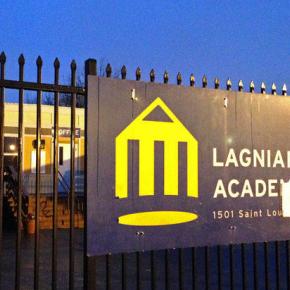
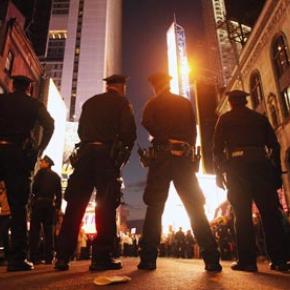
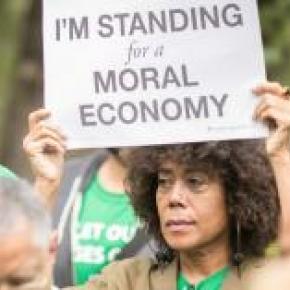
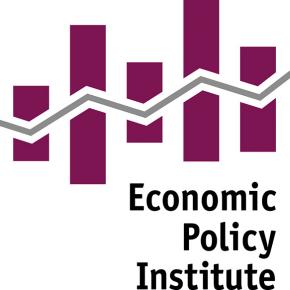
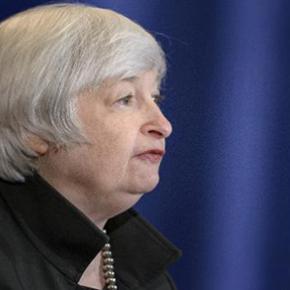


8 days ago
9 days ago